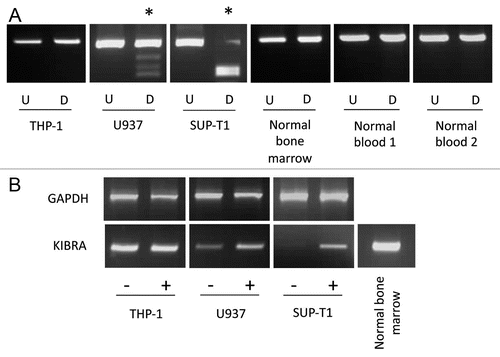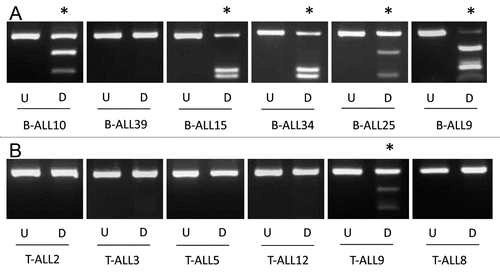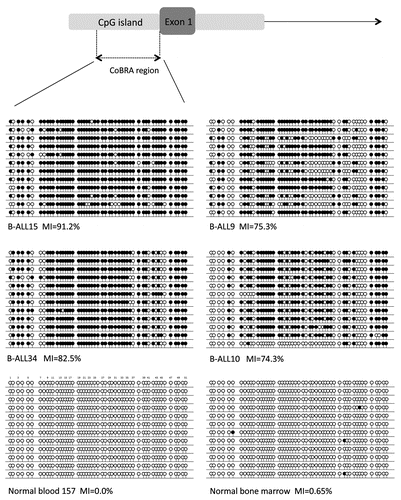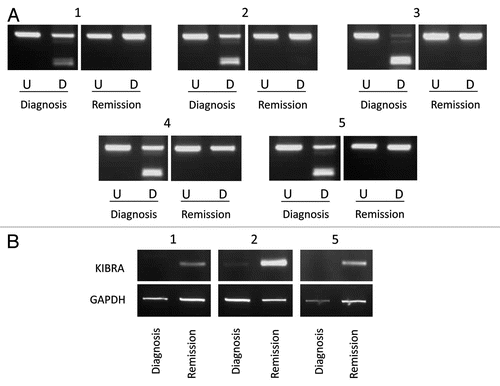Figures & data
Figure 1 Leukemia cell line methylation and expression status. KIBRA methylation and re-expression in leukemia cell lines. (A) Undigested PCR product (U) is shown next to digested PCR product (D) for three leukemia cell lines, one normal bone marrow sample and two normal blood samples. (B) GAPDH and KIBRA RT-PCR results are shown for unmethylated cell line THP-1, partially methylated cell line U937 and completely methylated cell line SUP-T1 pre (−) and post (+) treatment with 5-aza-2′-deoxycitidine. * indicates methylated samples.

Figure 2 KIBRA methylation in ALL samples. CoBRA results are shown for six childhood B-ALL samples (A) and six childhood T-ALL samples (B). Undigested products (U) are shown next to BstUI digested products (D) for each sample. * indicates methylated samples.

Figure 3 Sequencing of ALL samples and control blood and bone marrow. A schematic of the CpG island encompassing the first exon of KIBRA is shown with the CpG island in light grey, exon 1 in dark grey and the region analyzed for methylation by CoBRA and clone sequencing represented by dashed lines. Clone sequencing results are shown for four childhood B-ALL samples (B-ALL15, B-ALL9, B-ALL34 and B-ALL10), one normal blood sample and one normal bone marrow sample. Black circles represent methylated CpGs and white circles represent unmethylated CpGs. The methylation index (MI) is given as a percentage for each sample.

Figure 4 Paired diagnosis and remission analysis. (A) CoBRA results are shown for five childhood ALL patients at diagnosis and remission stages of disease. All samples are shown with undigested product (U) next to digested product (D). (B) Expression results are shown for three of the five patients shown in (A) at diagnosis and remission stages of disease for KIBRA and GAPDH.
